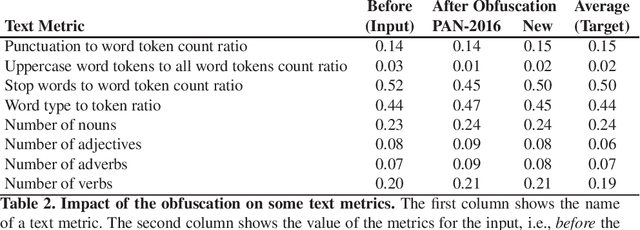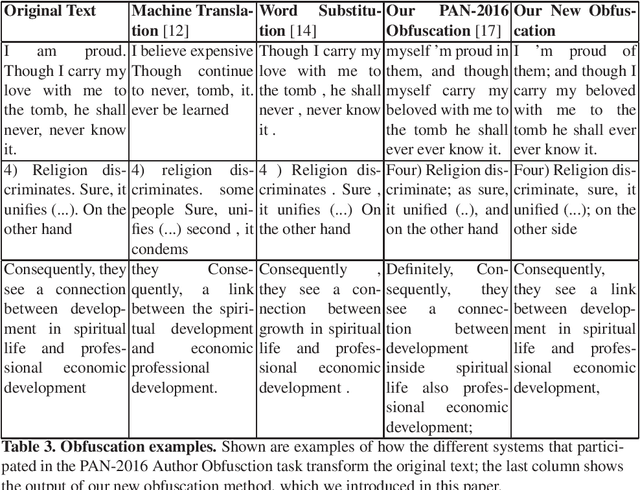The Case for Being Average: A Mediocrity Approach to Style Masking and Author Obfuscation
Paper and Code
Jul 28, 2017


Users posting online expect to remain anonymous unless they have logged in, which is often needed for them to be able to discuss freely on various topics. Preserving the anonymity of a text's writer can be also important in some other contexts, e.g., in the case of witness protection or anonymity programs. However, each person has his/her own style of writing, which can be analyzed using stylometry, and as a result, the true identity of the author of a piece of text can be revealed even if s/he has tried to hide it. Thus, it could be helpful to design automatic tools that can help a person obfuscate his/her identity when writing text. In particular, here we propose an approach that changes the text, so that it is pushed towards average values for some general stylometric characteristics, thus making the use of these characteristics less discriminative. The approach consists of three main steps: first, we calculate the values for some popular stylometric metrics that can indicate authorship; then we apply various transformations to the text, so that these metrics are adjusted towards the average level, while preserving the semantics and the soundness of the text; and finally, we add random noise. This approach turned out to be very efficient, and yielded the best performance on the Author Obfuscation task at the PAN-2016 competition.
 Add to Chrome
Add to Chrome Add to Firefox
Add to Firefox Add to Edge
Add to Edge